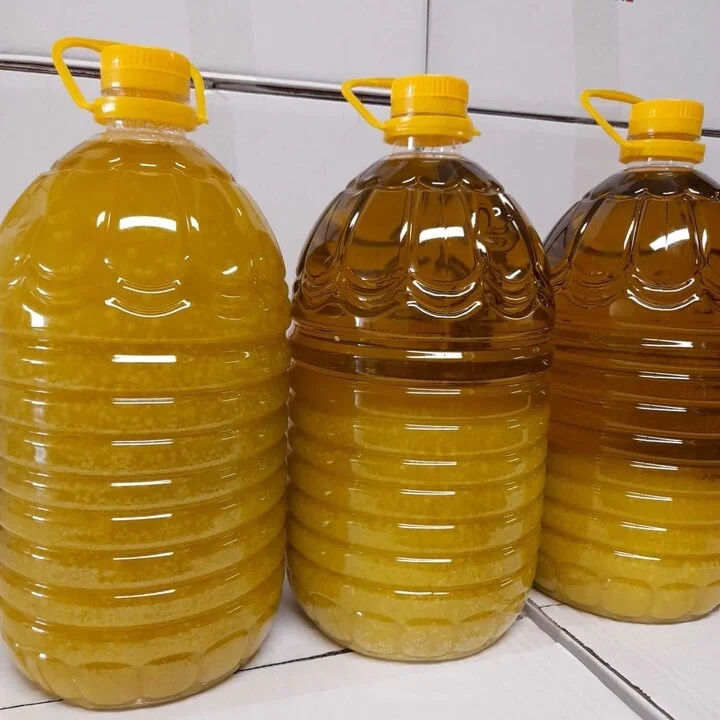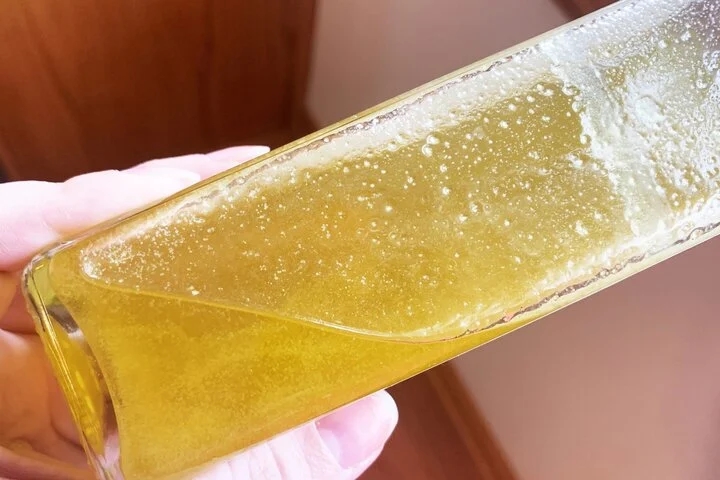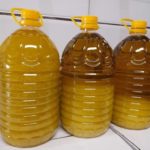The phenomenon of solidified cooking oil is quite common during the winter. Typically, the oil starts to solidify from the bottom of the bottle and gradually rises to the top. This phenomenon raises concerns among many consumers about the quality of the oil.
Does solidified cooking oil mean it is of poor quality?
Until now, many people believe that cooking oil should always be in a liquid state and should not solidify. Therefore, when they see the cooking oil solidify in cold weather, they immediately think that it is a low-quality product, possibly even counterfeit, and hesitate to continue using it out of fear for their health.

Does cooking oil solidify in cold weather mean it is of poor quality? (Photo: Oroaragon)
In reality, cooking oil solidifying in cold weather is just a normal physical phenomenon that does not affect its quality. Assoc. Prof. Le Thi Hong Hao, from the National Institute for Food Safety Testing and Hygiene, stated that the freezing point of cooking oil is related to the fatty acid composition in the product. If the saturated fatty acid content is high, the oil is more prone to solidifying. Cooking oils with a high content of unsaturated fatty acids have a lower freezing temperature. When cooking oil solidifies, it does not undergo any chemical changes and therefore does not reduce its quality.
Similarly, Assoc. Prof. Trinh Le Hung, from the Department of Chemistry, Faculty of Natural Sciences, Hanoi National University, explained that different types of cooking oils have different “freezing points.” Some products solidify within a few minutes at low temperatures, such as sesame oil, peanut oil, and palm olein oil. There are also types that can withstand several hours, days, or even weeks, such as soybean oil, rapeseed oil, sunflower oil, and rice bran oil.
According to this expert, the phenomenon of oil solidifying at low temperatures does not affect the quality of the oil or the health of the users. However, properly standardized cooking oil should not completely solidify in the bottle.

The different freezing points of cooking oil are due to the fatty acid composition. (Photo: Taste of Home)
In conclusion, all types of cooking oil will naturally solidify at low temperatures. This is a change in the physical state and does not involve any chemical reactions.
At a certain temperature, the oil bottle will start to have small solidified parts, but it will not completely solidify. The diverse fatty acid composition in the oil leads to uneven solidification. Even at the same temperature, the solidification level of the same cooking oil product from different production batches may not be the same.
The experts suggest that in low-temperature weather conditions, if the cooking oil bottle solidifies, you just need to soak it in warm water, and the oil will return to its normal liquid state.
Proper storage of cooking oil
For unused cooking oil, follow these storage guidelines:
– Always tightly close the bottle to prevent moisture and dirt from entering.
– Do not store cooking oil in a wet bottle as it may contain bacteria that can cause the oil to deteriorate and spoil quickly. If you want to transfer the cooking oil from a large bottle, use clean, dry containers.
– Store the cooking oil in a cool, well-ventilated place, away from direct sunlight or high humidity.

When buying cooking oil, choose products with reputable brands and pay attention to the label and packaging. (Photo: Timesofindia)
According to Assoc. Prof. Trinh Le Hung, cooking oil is sensitive to heat, light, and oxygen. Improper storage, exposure to direct sunlight, or excessively high temperature can make the oil turn toxic and harmful to health.
Source: VTC news
Cooking oil solidifies in cold temperatures due to its fatty acid composition. Oils with a high content of saturated fatty acids are more prone to solidifying, while those with predominantly unsaturated fatty acids have a lower freezing temperature. This diversity in composition also leads to uneven solidification, even among the same type of oil from different production batches.
Yes, different types of cooking oils have different “freezing points.” For example, sesame oil, peanut oil, and palm olein oil solidify within a few minutes at low temperatures, while soybean oil, rapeseed oil, sunflower oil, and rice bran oil can withstand several hours, days, or even weeks without solidifying completely.
According to experts, the phenomenon of oil solidifying at low temperatures does not impact the quality of the oil or the health of consumers. However, properly standardized cooking oil should not completely solidify in the bottle. If your cooking oil bottle solidifies in cold weather, simply soak it in warm water to return it to its normal liquid state.
- Always tightly close the bottle to prevent moisture and dirt from entering.
- Do not store cooking oil in a wet bottle, as bacteria may develop and cause the oil to deteriorate.
- Store the oil in a cool, well-ventilated place, away from direct sunlight and high humidity.

































